Coroner's jury into Saint John scrapyard death makes 7 recommendations

A coroner's jury into the death of a truck driver at American Iron and Metal in Saint John two years ago has come up with seven recommendations to prevent a similar death.
Bruce Lagacé, 48, an employee of Deschênes Drilling, was crushed at the metal recycling plant on Nov. 24, 2021, when his trailer of scrap metal was being unloaded by an AIM crane operator.
A WorkSafeNB investigation found Lagacé had entered his trailer using a door by the cab and the crane operator, not seeing him, continued to use a large, heavy bundle of chain-link fence to sweep out any debris.
The jury recommends drivers not stay in their vehicle during offloading.
Instead, drivers should remain in a designated safe area until a site employee indicates it is safe to return to their vehicle, the jury said.
The cleaning process should also be completed at a designated cleaning area.
Upon arrival at a site, a receiver should ensure the customer has signed updated safety procedures and protocols, and there should be a clear procedure for communicating any transfer of duties, the foreperson said on behalf of the five-member jury.
In addition, the jury recommends safety procedures be reviewed periodically by a third party and updated when needed, and there should be punitive measures for safety infractions.
Recommendations, not orders
Coroner Michael Johnston will deliver the recommendations to the relevant agencies to review and act upon. They will have six months to respond, he said.
Johnston noted they are recommendations only — not orders, but he will include any responses — or lack thereof — in his annual report.
A coroner's inquest is not a criminal procedure and does not assign guilt or responsibility, he stressed.
Lagacé's family did not attend the inquest. The coroner's office was in contact with them in preparation for the inquest, "however they decided they were not going to attend because it would be too difficult to relive the situation," Johnston told reporters.
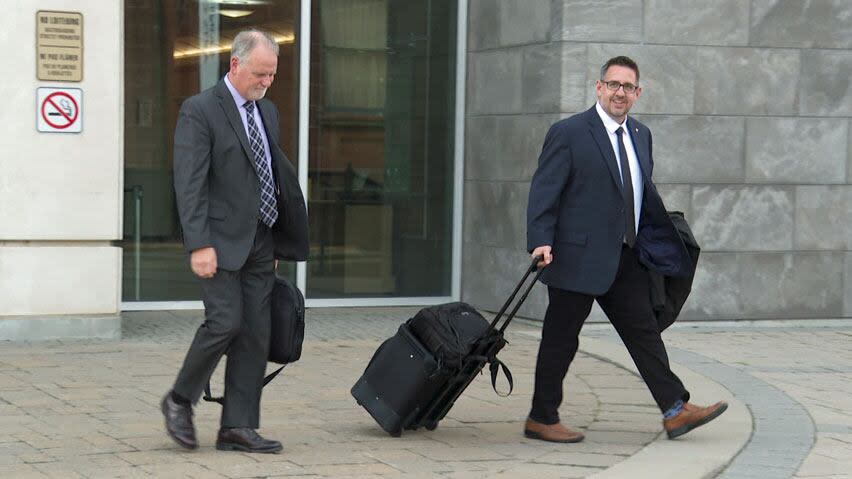
Coroner Michael Johnston, at right, pictured with Crown prosecutor Patrick Wilbur, said coroner services speaks for the dead to protect the living, and inquests help satisfy the community 'that the circumstances surrounding the death of one of its members will not be overlooked, concealed or ignored.' (Graham Thompson/CBC)
He publicly offered his condolences to the family and thanked the jurors for their diligence.
The jurors heard evidence from 13 witnesses over two days and delivered their recommendations after deliberating for about three and a half hours.
"As coroners, we deal with death every day and it can be hard on us as well. I can only imagine what it's like for folks like you that don't deal with it every day," Johnston said.
"So just please know that it can weigh on your mind. It can be heavy," he said, encouraging the jurors to reach out for help if they need it.
'Non-survivable injury'
Earlier Wednesday, Saint John Regional Hospital ER physician Matt Greer testified staff rushed to prepare space, equipment and other resources for the arrival of Lagacé. But he was pronounced dead within six minutes.
Lagacé had no vital signs, his rib cage was "non-existent," and he had already been receiving CPR for at least 30 minutes, he said.
The ER team quickly determined Lagacé had a "non-survivable injury" and Greer declared his time of death as 10:07 a.m. — roughly one hour after AIM security video showed Lagacé enter his trailer.
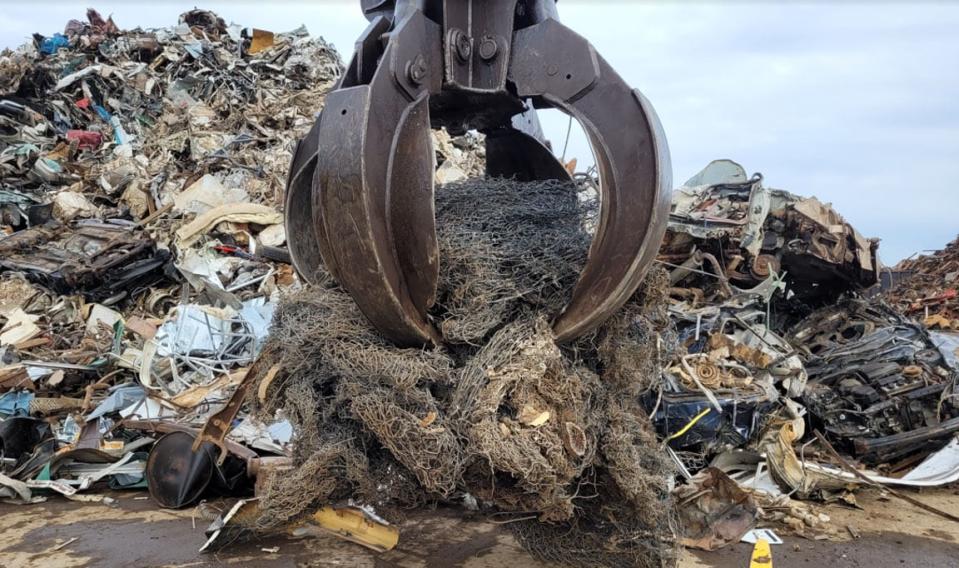
The ball of fencing AIM crane operators use to sweep out trailers weighs hundreds of pounds, estimated WorkSafeNB manager of investigations Michel Cyr. (Submitted by WorkSafeNB)
The pathologist who conducted the autopsy, Dr. Ather Naseemuddin, said Lagacé's upper spine was also dislocated and his lungs, lacerated. His injuries were "incompatible with life."
A toxicology screening found no illicit drugs or any drugs that would suggest impairment, said Naseemuddin.
He ruled the cause of death was multiple blunt force injuries to his head, chest and abdomen.
Employer suggests padlock on trailers
Gilles Deschênes, the owner of Deschênes Drilling, described Lagacé as a good, reliable employee. Lagacé, who was previously an entrepreneur, got into trucking 12 or 15 years ago and had worked for him for about two years, he said in French through an interpreter.
He was knowledgeable about trucks and the only employee responsible for transporting scrap metal to Saint John, said Deschênes, who testified via video conference.
Normally, Lagacé took about three loads a month, but around the time of his death, it jumped to three or four a week because Deschênes was cleaning out his yard before winter, when it's more expensive to transport and sort, the jury heard.
Lagacé never shared any concerns about safety procedures regarding the unloading of material at AIM, Deschênes said.
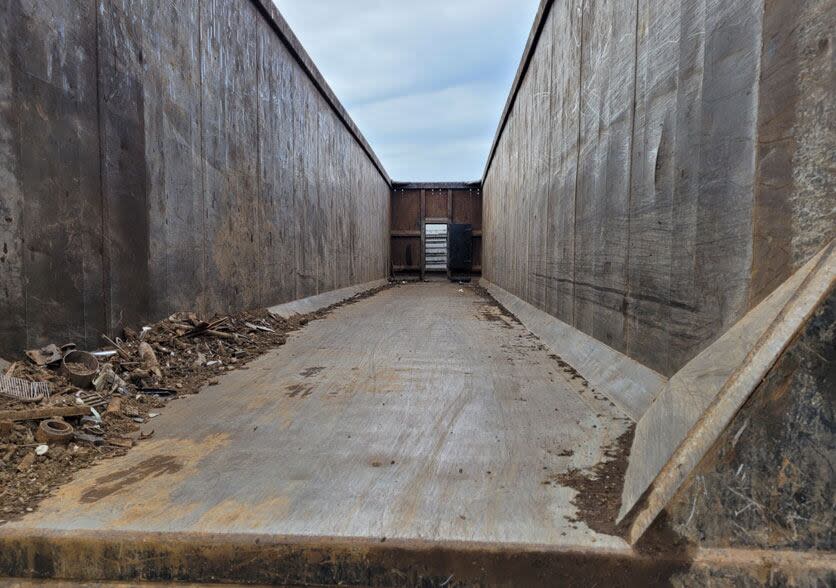
This rear view of Lagacé's trailer shows the debris that was still in it, which the crane operator was trying to remove, when Lagacé was crushed. It also shows the door near the cab he used to enter the trailer, unseen by the crane operator. (Submitted by WorkSafeNB)
Deschênes Drilling hasn't made any deliveries to AIM since Lagacé's death. "We were getting short on material," he explained.
But the company is currently in talks with AIM to recommence, he said.
There have been no discussions about the company's new site security procedures. "We're not there yet, we're only to monthly prices," Deschênes said.
He hasn't discussed what happened to Lagacé with his employees, he said, but intends to tell anyone who takes over deliveries.
Deschênes suggested a padlock on trailer doors upon arrival on-site should be considered.
22 safety orders issued at AIM since death
In the two years since Lagacé was crushed to death at American Iron and Metal, WorkSafeNB has issued 22 orders to the company to fix health and safety issues at its scrap metal plant in Saint John, manager of investigations Michel Cyr, who was recalled to testify Wednesday, told the jury.
The workplace safety organization has also repeatedly offered to send a group of its consultants to help AIM develop its policies, procedures and directives since Lagacé died, he said.
But, "as of 10:30 this morning, I confirmed with the director, there has never been an acceptance."
After Lagacé's death and other incidents at AIM, WorkSafeNB decided to step up its inspections at the scrap metal plant to once a month, said Cyr.
AIM has had "several incidents," including a few cases with trials pending, he said, without elaborating.
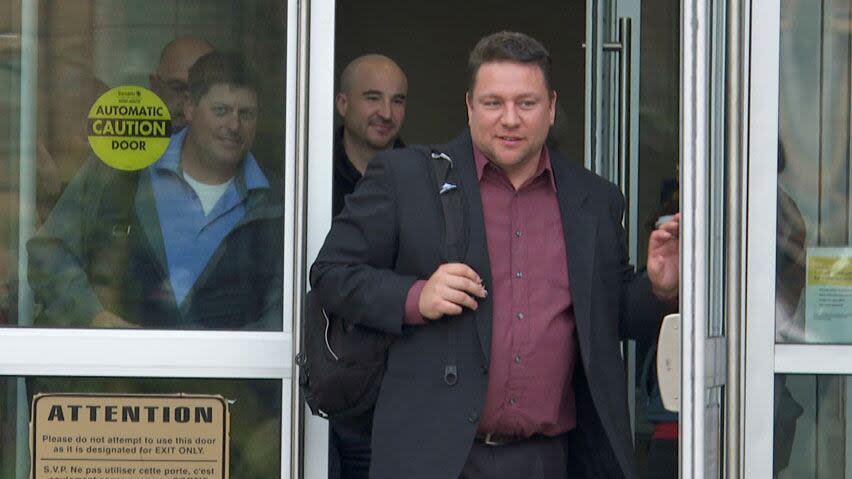
WorksafeNB had 10 meetings with American Iron and Metal in 2022 and each time offered the company the help of a group of consultants to develop site safety procedures and protocols, but AIM has never accepted, said manager of investigations Michel Cyr. (Graham Thompson/CBC)
In 2022, WorkSafeNB issued 11 orders to AIM to "remedy some situations," said Cyr.
"And this year we're up to 11 orders as well."
Crown prosecutor Chris Titus did not ask Cyr to describe the nature of those orders, or how many of them are outstanding, but he did note that if there were any "major issues," WorkSafeNB could issue a stop-work order.
Cyr agreed and added that if a company doesn't comply with an order, WorkSafeNB can "escalate" and proceed to prosecution. That hasn't happened, he said.
'Constantly improving'
AIM is "constantly improving on [its] health and safety measures," Michael Cormier, vice-president for the eastern region, testified.
For example, drivers were previously provided with a one-page site safety document to sign annually, he said. AIM now lays out the responsibilities of the drivers, operators and inspectors, which could be updated more frequently.
All contractors — not just drivers — must also complete site safety orientation, which covers everything from required personal protective equipment, to AIM's emergency response plan, as well as its harassment and violence policy, said Cormier.
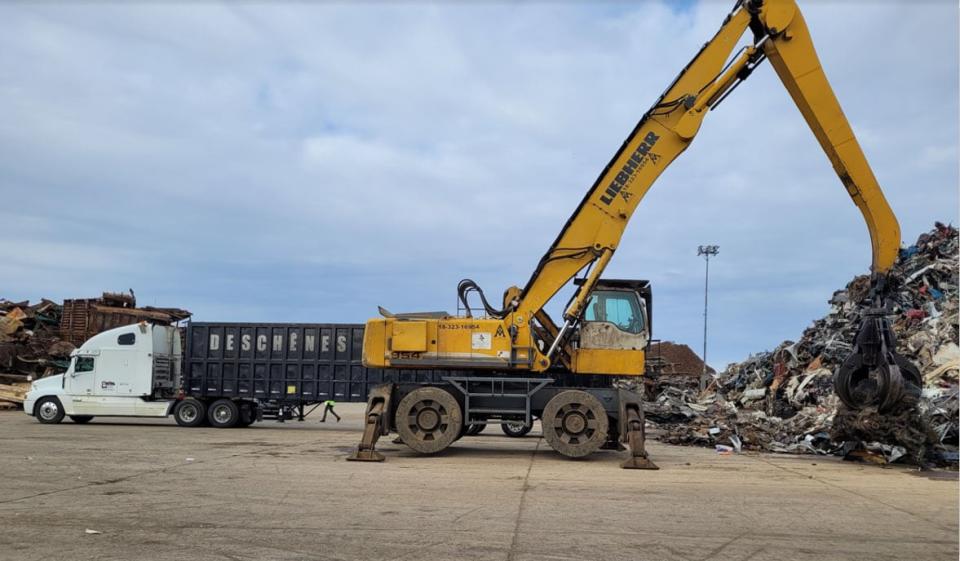
AIM crane operator Justin Richards had only worked at the metal recycling plant for eight months when Bruce Lagacé was killed, but he had about 10 years of experience with heavy equipment. (Submitted by WorkSafeNB)
In addition, AIM has doubled the number of safety advisors to four since Lagacé's death and restructured to have a local safety manager, instead of being based in Hamilton, Ont., he said.
Operators and inspectors still can't communicate with drivers on the company's internal radio system, said Cormier. But inspectors are supposed to keep drivers within their sight, drivers are supposed to remain in their trucks, and operations are supposed to cease if they don't.
AIM also has daily safety meetings, he said, and employees must carry "hazard awareness cards" on them at all times to ensure they stop before doing a task to consider the potential risks and come up with a plan.
Cormier testified before Cyr, and Crown prosecutor Patrick Wilbur did not ask him about the 22 orders issued by WorkSafeNB or the company's refusal to accept the help of consultants.
Although AIM employees testified Tuesday that an inspector was present when Lagacé's trailer was being unloaded, Cyr replayed the company's security video from that day and pointed out, "there's no inspectors around."
WorkSafeNB officials obtained audio statements in the days following Lagacé's death and were told "one inspector handled four or five trucks at a time," Cyr added.


